The Green New Deal: Not Insanity, but an Investment
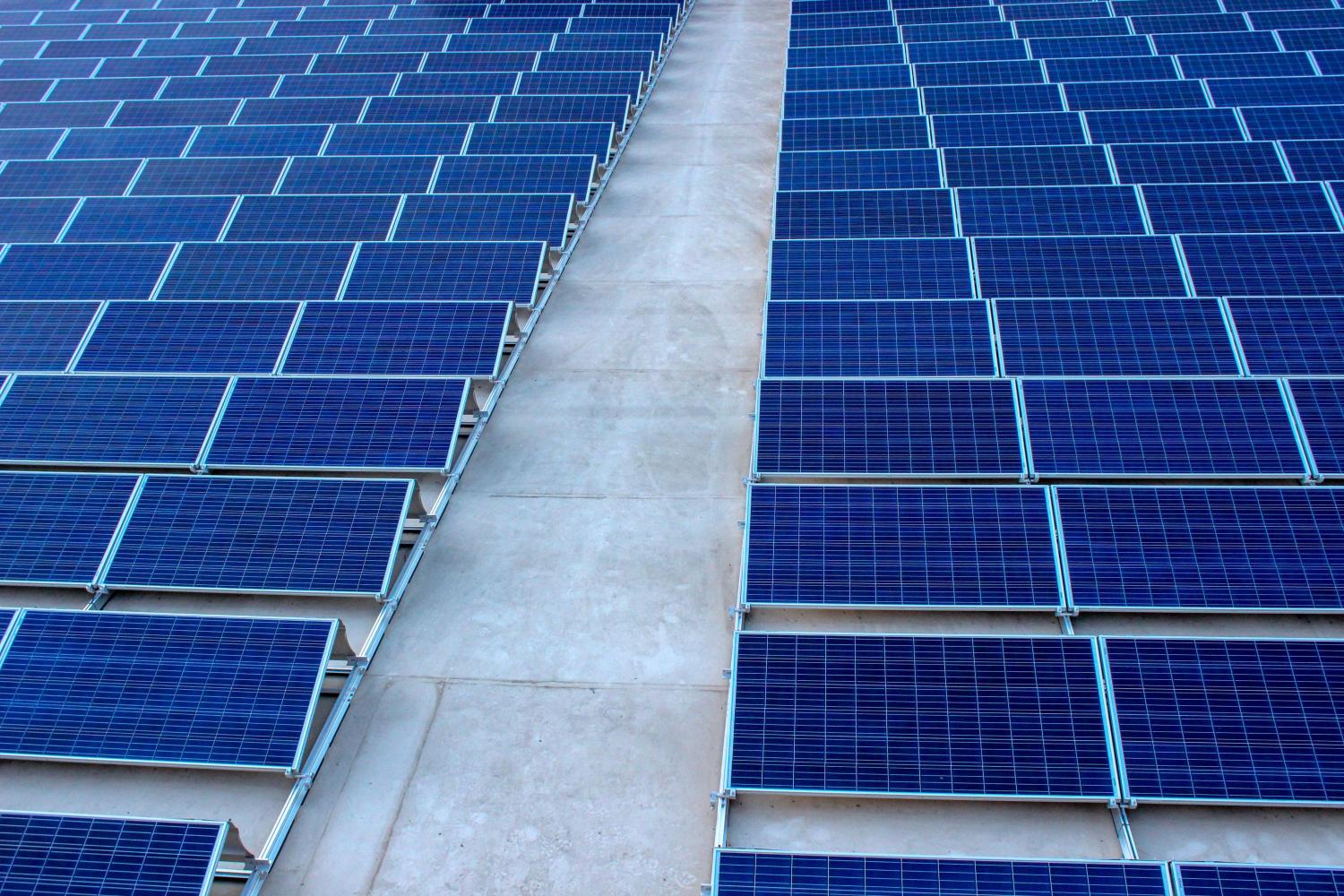

Among the many news stories that marked 2019, the Green New Deal was one ongoing discussion that exemplified a deeply divided America. Proponents saw this massive plan as a way to wean America off of fossil fuels, avoid ruinous climate change and also create new jobs. Critics viewed the concept as one that would disrupt the economy, and not for the better. While much of the U.S. public is supportive of at least some of the Green New Deal’s goals, political reality has sidelined the proposal for now.
On the heels of COP25, which for the most part analysts have described as a flop, one study has come out suggesting that kickstarting the Green New Deal into high gear, and scaling it worldwide, could be well worth the investment for citizens and businesses alike.
Last week, a Stanford University researcher published the results of his number crunching and concluded that while the implementation of a worldwide Green New Deal during a seven-year span would cost a whopping $76 trillion dollars, the global economy would recoup that massive sum relatively quickly by reaping annual savings of about $11 trillion – not to mention the fact that citizens would benefit from reduced climate action risks, cleaner air, fewer blackouts and more reliable sources of energy and power.
Workers would benefit too, according to the study’s author, Mark Z. Jacobson. The rollout of the a global Green New Deal would launch new jobs in project development, construction and new sites of power generation – as well as in the finance and supply chain sectors. The net result: 28.6 million more jobs would be created than lost.
Jacobson’s research was based on modeling that incorporated many factors, including the analysis of demand projections for seven types of fuel sources across 143 nations. By switching from fossil fuels to more renewable sources of energy, he concluded such a change would result in a 57 percent reduction in energy needs and more than a 60 percent decrease in energy and power costs. Most dramatically, such a policy overhaul would generate a reduction in social costs by over 90 percent, due to decreased expenditures for health care as well as less spending on infrastructure related to climate change risks.
The numbers are convincing, though Jacobson’s methodology have been scrutinized in the past. Bloomberg, for example, has pointed out that he was criticized for a 2017 article that measured the costs of phasing out fossil fuels. And even though renewables have scaled up at a rate that seemed unimaginable only a decade ago, continued demand for energy means solar and wind technologies are constantly challenged to keep pace.
Image credit: Angie Warren/Unsplash
This Responsible CEO of the Year Stands Out for His ESG Leadership

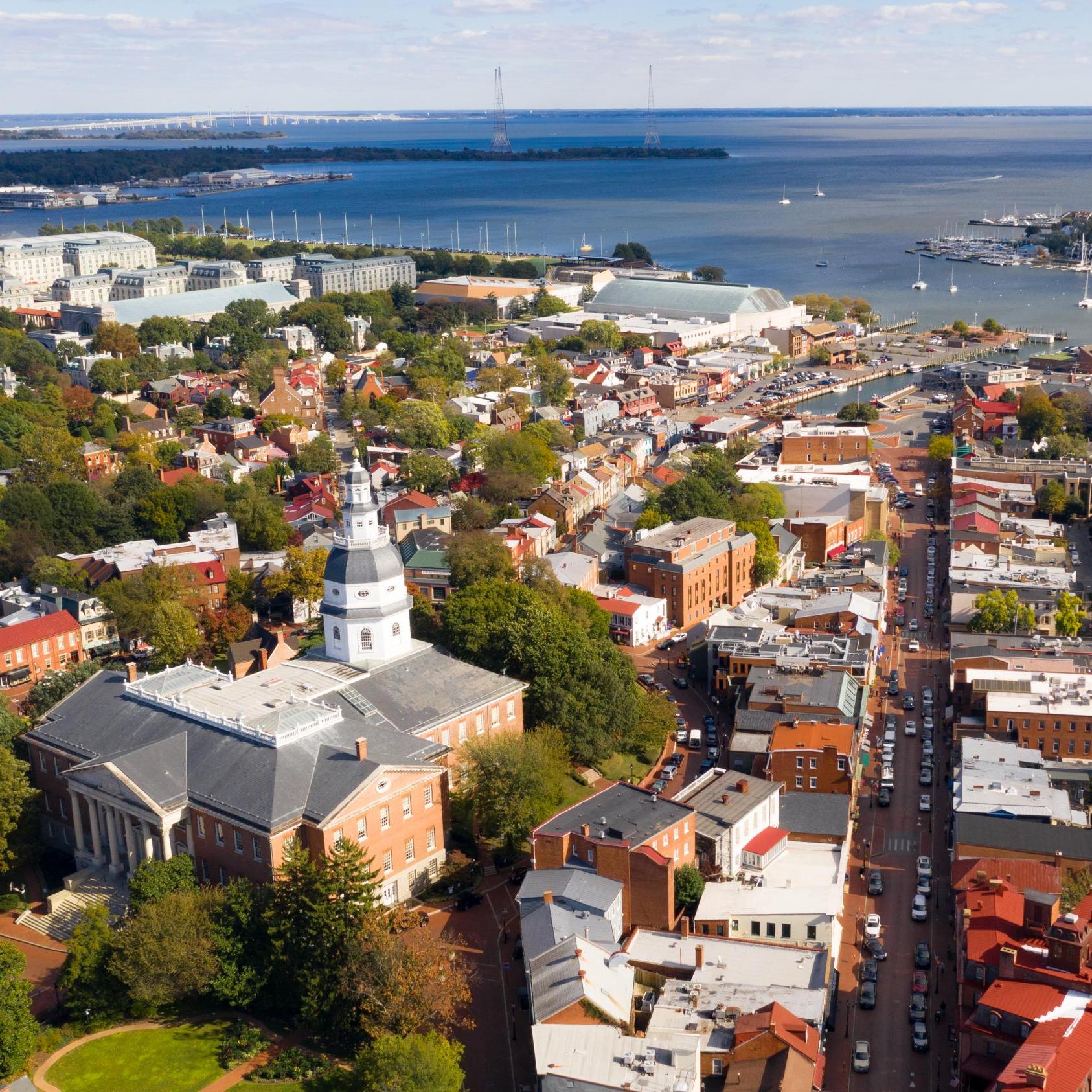
Jeff Eckel launched his personal and professional mission more than 35 years ago. He had read the 1971 book by Frances Moore Lappé, A Diet for a Small Planet, which in part resonated with Eckel for its description of the global meat industry as a major contributor to food scarcity worldwide. What struck Eckel most about Lappé’s book, however, was its point that the food industry was highly inefficient.
“I’ve since done business all over the world, and that notion of efficiency has never left me,” Eckel told CR Magazine.
Eckel has been eating a sustainable diet ever since, part of his lifelong commitment to the environment that also includes working to eliminate emissions by implementing technology and business innovations within the power generation sector. Now, this vegetarian leads a company with a $1.6 billion market evaluation. Since its 2013 IPO, Annapolis, Maryland-based Hannon Armstrong had an average annual total return of about 22 percent, outperforming the S&P 500.
After what he described as an early “checkered” career, Eckel joined Hannon Armstrong in 1984. He soon had a leading role in financing some of the earliest large-scale solar projects—notably California Solar Energy Generating Systems, which includes Ivanpah, the world’s second largest solar-thermal power generation facility.
During his interview with CR Magazine, Eckel was clear about where he stands on climate change, but he also emphasized how his company focuses on projects that make both environmental and financial sense. “You can’t make a difference if you don’t stay in business,” Eckel told us. “Hannon Armstrong will earn better risk-adjusted returns by investing on the right side of the climate change line.”
Eckel’s vision and longstanding commitment to climate action make him one of the leading executive voices on environmental, social and governance (ESG) decision-making today. It’s easy to focus on the “E” (environment), based on Hannon Armstrong’s book of investments that decrease carbon emissions or boost climate change resilience, but Eckel stands out as a leader on social and governance factors, too.
When it comes to community engagement, Hannon Armstrong, under Eckel’s leadership, is an example of how a company can leverage its core expertise for good. The company’s employee volunteerism efforts, for example, include the installation of rooftop solar for low-income households.
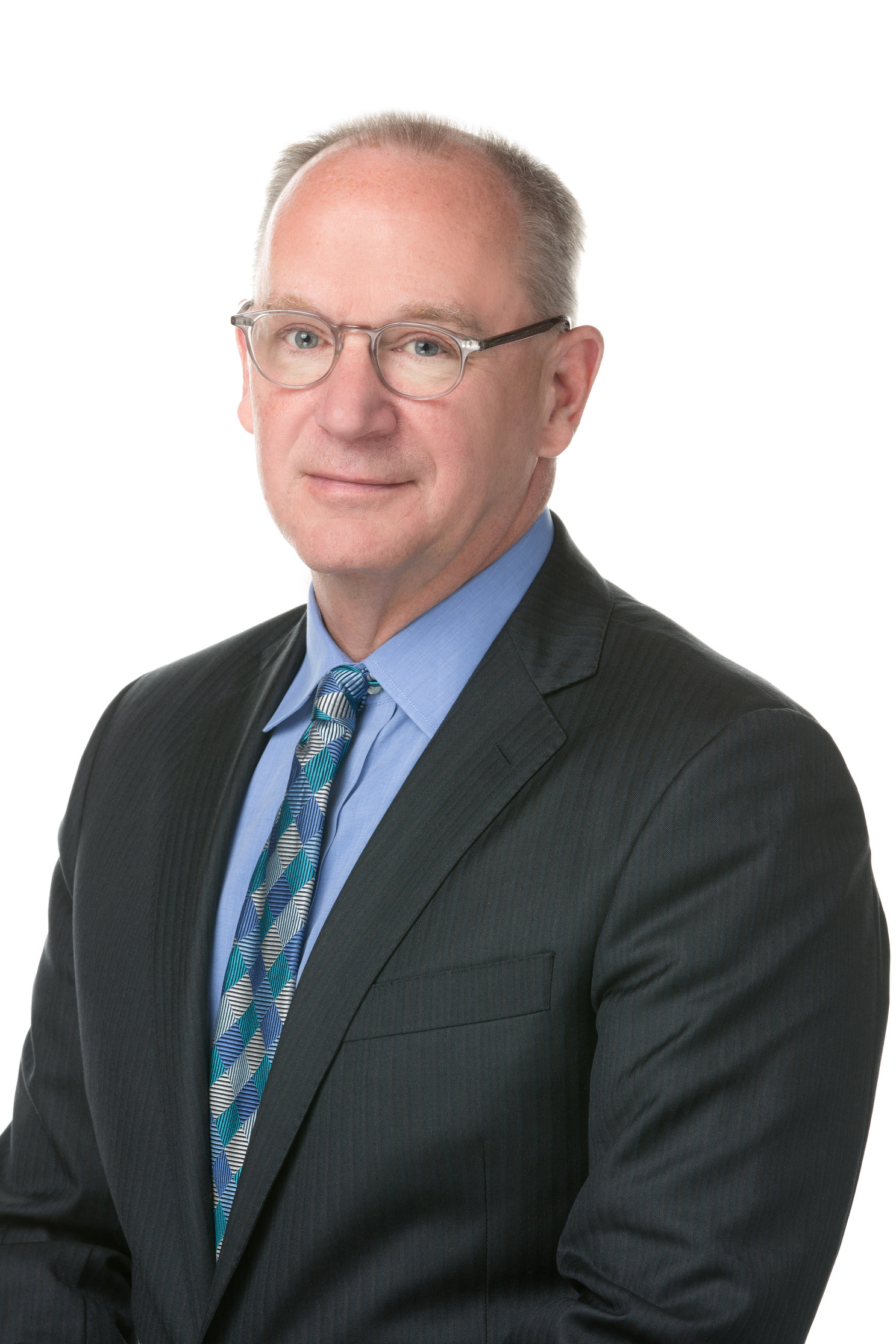
Jeff Eckel, Chairman, President and CEO of Hannon Armstrong
Those same employees also have a say in how Hannon Armstrong runs its sustainability programs. Eckel regularly holds employee meetings on ESG, along with the company’s overall performance. And those employees reflect various perspectives and points of view: The company’s ongoing commitment to diversity is reflected in its workforce, which is about 40 percent female and 20 percent people of color.
Eckel’s emphasis on sustainability is also reflected in how investors and analysts view the company, with a solid “A” for how the company approaches the “G” (governance) in ESG. Approximately 25 percent of Hannon Armstrong’s shares are held by sustainable investors. S&P and Fitch have responded in kind, as both rating agencies give the company’s bonds high marks for its low leverage, long-term customer relationships and diversified portfolio.
The culture at Hannon Armstrong, one that takes ESG to heart, inspires Eckel day after day. “People are here making a difference,” he said. “There’s a humility that comes with the chance to do what we love and make a difference, and people are grateful for that. We’re not beating our chests—we’re actually doing this work.”
Previously published in CR Magazine.
Image credit of Annapolis, MD: Hannon Armstrong Communications
Brands Taking Stands: 2019 Year in Review


(Image: U.S. Women’s Soccer players Megan Rapinoe, Christen Press and Alex Morgan discuss pay equality at a media event with LUNA Bar in April 2019. Two months later, P&G took its own stand for equal pay.)
2019 was a big year for corporate, executive and employee activism. Here are some of the boldest and most influential brands taking stands stories that crossed our desks.
January
BlackRock CEO Larry Fink issues another headline-grabbing letter, saying companies can’t sit on the sidelines when it comes to social and political issues.
Visa supports Feeding America’s Shutdown Response Fund, launched to support federal workers in the wake of the government shutdown. Meanwhile, outdoor gear brands like Columbia, REI, The North Face and Patagonia stepped up to advocate for National Parks, many of which remained open but unmaintained during the shutdown.
Hello, Super Bowl ads that take a stand! Companies including Gillette and Anheuser-Busch air ads with purpose-oriented messaging. AB’s ad focused on immigration, while Gillette’s took on toxic masculinity.
February
Activist investors pressure companies to reveal their gender pay gap.
Barbie releases a line of inclusive dolls, including a doll with a prosthetic limb a doll that uses a wheelchair.
Black executives set up a political action committee (PAC) dedicated to the “economic issues—wealth, wages, work—that affect black Americans.”
Fashion labels including Chromat, Collina Strada, Livari and Nicole Miller take a stand at New York Fashion Week, theming their entire collections around climate change and showcasing sustainable materials.
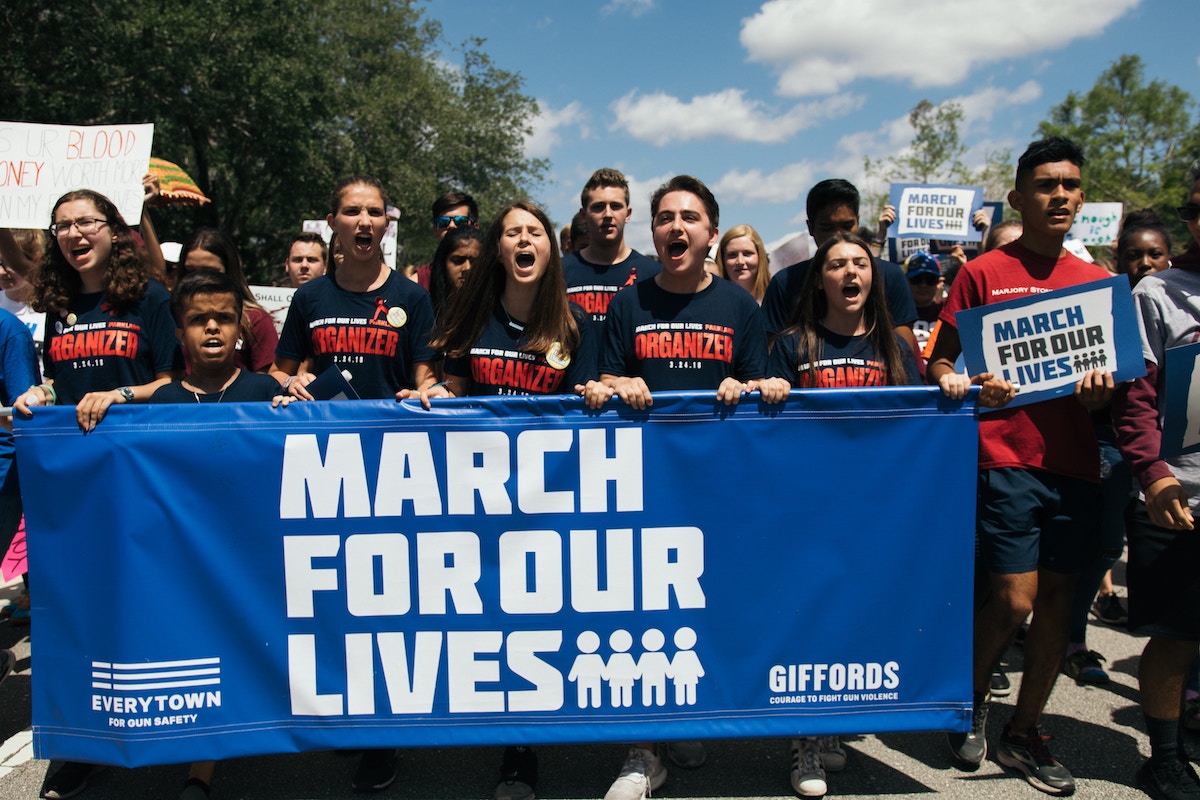
(Image: The March for Our Lives rallies in March 2018 sparked a national conversation around gun control that continues today.)
March
Uber and Lyft drivers strike for better pay in California.
Dick's Sporting Goods stops selling guns, a year after the company stopped selling assault-style rifles following the shooting at Marjory Stoneman Douglas High School in Parkland, Florida.
Companies including Target, Tyson Foods and Walmart pledge to hire more people with criminal justice histories.
More than 1 million students participate in Youth Strike 4 Climate’s global protest, walking out of school and demanding lawmakers take action on climate change.
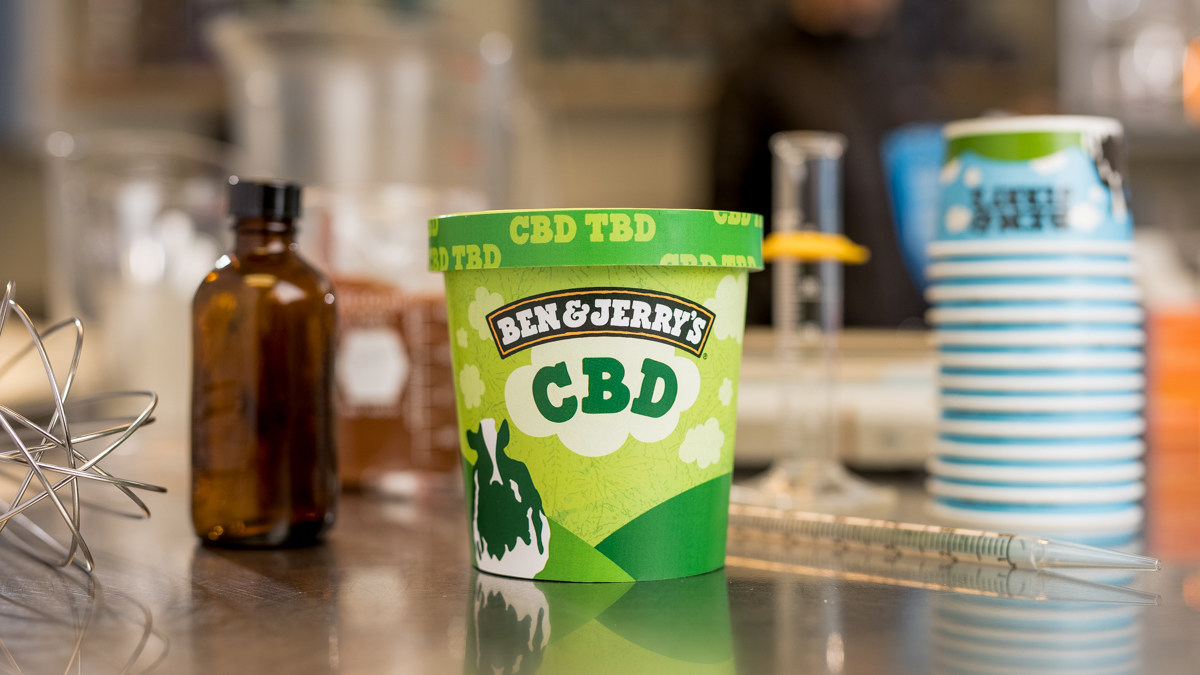
(Image: Ben & Jerry’s also intends to make CBD-infused ice cream available once it’s legalized at the federal level.)
April
Employees publicly demand that Amazon do its part to address climate change.
Patagonia lays down the law, refusing to co-brand with companies that don’t align with its mission.
American billionaires, including JPMorgan Chase CEO Jamie Dimon, Blackstone CEO Steve Schwarzman and Bridgewater Co-Chairman Ray Dalio, call for a reformation of capitalism, starting with higher taxes for themselves.
Walgreens, Rite Aid and Walmart stop selling cigarettes and vaping products to people under 21. CVS stopped selling tobacco products entirely back in 2014.
Ben & Jerry’s calls on lawmakers to pass legislation that would expunge all cannabis convictions from legal records, which disproportionately affect people of color, saying that “legalization without justice is half baked.”

(Image: Bridgestone employees march in Nashville's Pride Festival and Parade.)
May
The Guardian swaps the term “climate change” for “climate emergency.”
Companies come out against the so-called “slate of hate,” a set of anti-LGBTQ bills proposed in Tennessee. Companies including Nashville-based Bridgestone, as well as Dell, Salesforce and Postmates, spoke out against the legislation and voiced support for the state’s LGBT community.
CEOs from 50 leading global and European brands, including Diageo, Unilever, Ikea, DSM, Burberry, Phillips and Tetra Pak urge EU governments to decarbonize.
The Green Sports Alliance calls on its North American members to sign onto a U.N. climate action framework. Companies/franchises including the New York Yankees, the NBA, and sports and entertainment company AEG soon answer the call.
June
Investors demand that companies release data about their diversity and inclusion policies and practices. Meanwhile, 72 CEOs signed an Equity Pledge, vowing to fill half of meaningful leadership roles with women by 2030.
Highlights for Children—a magazine that summons nostalgic affinity on both sides of the political aisle—takes a stand against U.S. immigration policy, family separation and the detention of children with a CEO statement. Meanwhile, Wayfair employees stage protests after news that the company provided furniture to detention centers holding migrant children.
More than 300 CEOs sign public statements in support of abortion rights, following legislation in states like Georgia and Alabama that effectively banned abortions.
July
Old Navy celebrates its 25th birthday with a new product and a campaign around belonging. Its purple 4th of July shirts read “purple is what you get when you bring red, white and blue together” and come along with CEO statements asserting that everyone is welcome in Old Navy stores.
Procter & Gamble takes a stand for pay equality and donates over half a million dollars to underpaid U.S. Women’s soccer players. Clif Bar brand Luna Bar also donated to close the pay gap on the U.S. Women’s team back in April.
U.S. unions including the United Steelworkers, Service Employees International Union and Utility Workers Union of America join environmental groups like the Sierra Club and Natural Resources Defense Council in a climate action plan that focuses on a just transition for displaced workers.
August
The CEO coalition Business Roundtable bucks the shareholder primacy theory in an updated purpose statement, asserting that companies have a responsibility to all stakeholders, including customers, employees, suppliers and communities. More than 180 CEOs sign a letter in support.
Apple CEO Tim Cook pledges funds to help fight wildfires ravaging the Brazilian Amazon and restore affected rainforests.
Hundreds of Google employees make a public pledge not to work on a potential project for the U.S. Customs and Border Patrol.
Marriott International committed to phase out mini bottles of shampoo, conditioner and other toiletries at all locations by December 2020. The move followed a similar announcement from InterContinental Hotels Group (IHG) in July.
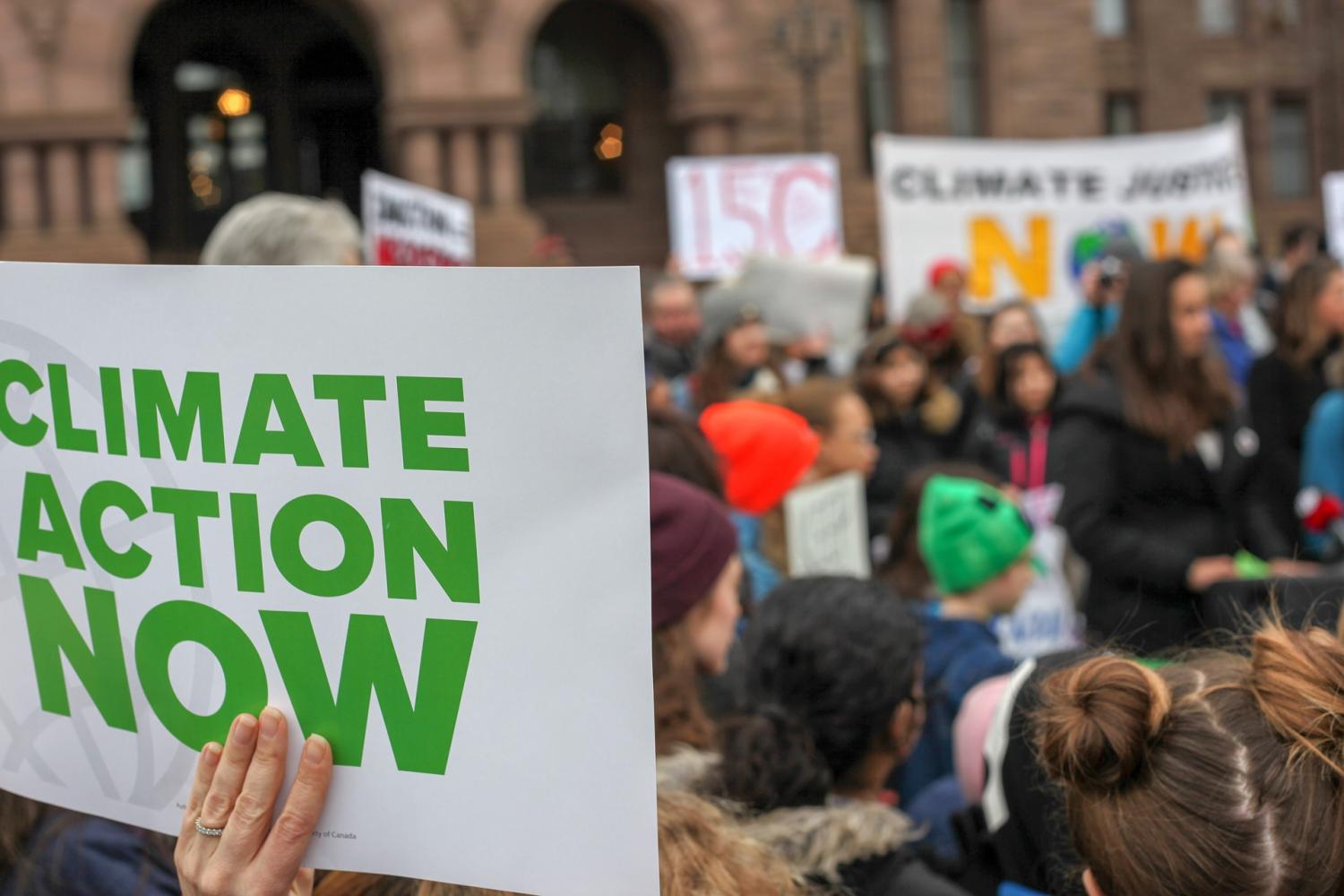
(Image: The Global Climate Strike draws support from millions worldwide, including major companies and their employees.)
September
In response to mass shootings in Ohio, Mississippi and Texas, Walmart limits gun and ammunition sales, while requesting that customers no longer openly carry guns in its stores. Other retailers including Kroger, Walgreens, CVS and Wegmans soon joined in asking customers to leave their guns at home.
Ben and Jerry's launches Justice Remix’d ice cream flavor in support of criminal justice reform.
Employees at major multinationals including Amazon join the Global Climate Strike, while other companies like Lush, Seventh Generation, and Patagonia showed support by closing for the day so employees could participate.
October
Dick’s Sporting Goods CEO Ed Stack told reporters his company destroyed about $5 million worth of firearms from its inventory instead of returning them to manufacturers.
Facebook employees publicly oppose the social network’s policy that allows political campaigns to lie in ads.
Lyft starts offering free rides so that people can get to job interviews.
November
As Facebook continues to push back against claims it should be responsible for fact-checking politically-oriented advertising, Twitter bans political ads outright.
Aldi U.S. calls on suppliers to find alternatives to harmful pesticides, specifically those containing the compounds neonicotinoids and chlorpyrifos (CPS), which have been linked to impacts on bee and bird health.
Outdoor gear label REI shutters all stores, warehouses and offices on Black Friday for the fifth consecutive year and reignites its #OptOutside campaign, encouraging people to ditch the mall and spend some time outdoors.
U.S. military stakeholders, with backing from big names like John Kerry and Arnold Schwarzenegger, launch the World War Zero campaign ahead of the annual U.N. climate talks in Madrid (COP25). As the name implies, the campaign seeks to gain bipartisan support for decarbonization by positioning climate change as a national security concern.
December
On the sidelines of COP25, the largest U.S. labor union joins 75 leading CEOs in a joint statement in support of the Paris climate agreement and a "just transition” toward a decarbonized economy.
More than 600 institutional investors managing $37 trillion in assets call for governments to step up their efforts against climate change.
Water, energy and hygiene solutions firm Ecolab pledges to achieve net-zero carbon emissions by 2050—and leverages the opportunity to take a stand for water issues as part of mainstream climate dialogue.
Executive Chairman Klaus Schwab and the World Economic Forum issued a new "Davos manifesto" in support of "a better kind of capitalism" ahead of Davos 2020.
Teenage climate activist Greta Thunberg becomes Time magazine's Person of the Year, while Megan Rapinoe—the U.S. Women's Soccer player who led her team in a fight for equal pay following their World Cup victory—was named Sportsperson of the Year by Sports Illustrated.
An abridged version of this timeline was published in the Autumn 2019 edition of CR Magazine.
Image credits: Luna Bar, Ben and Jerry's, Bridgestone, Jasmin Sessler/Pixabay
In Ohio, Little Giant Eagle Makes Big Supermarket Sustainability News
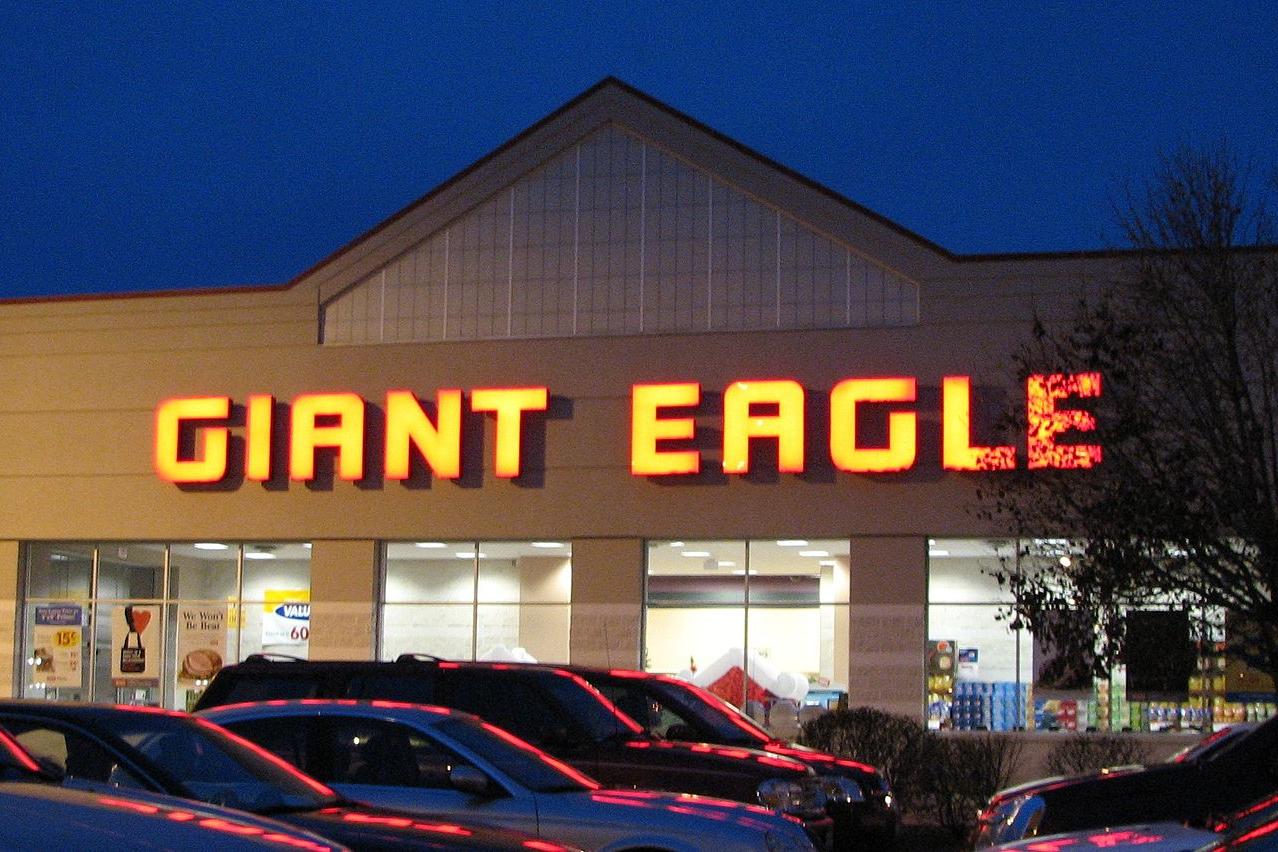
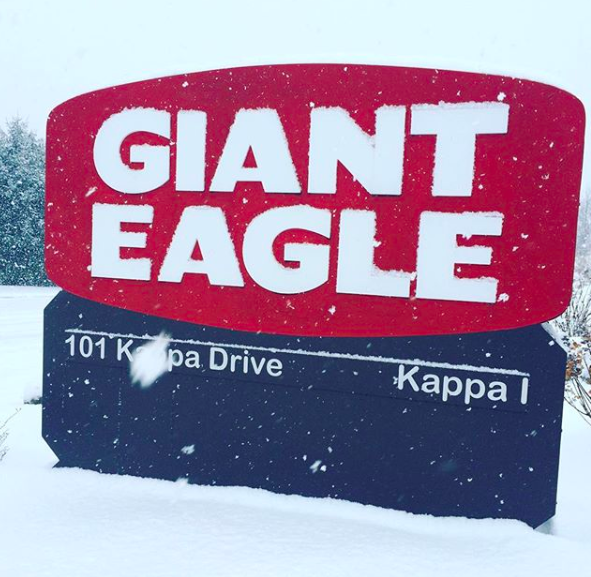
Giant Eagle Inc. is headquartered in Pittsburgh, Pennsylvania. Less than five hours away in the sprawling Midwest in Cincinnati, Ohio is The Kroger Co. headquarters. Both supermarket chains recently have made commitments to remove single-use plastics from business operations by 2025.
There are notable differences in size between the two companies, though. Giant Eagle’s revenue is a mere 7 percent of its relative neighbor’s, Kroger. This chain has more than 470 stores throughout western Pennsylvania, north central Ohio, northern West Virginia, Maryland and Indiana. Contrast that number with that of Kroger, which has more than 2,800 stores in 35 states.
In an industry where profit margins typically range from 1 to 3 percent, what is accelerating Giant Eagle’s giant push to eliminate cheap plastic bags?
Bottom-line and environmental numbers to consider
Digging into the numbers, grocery stores make money based on volume. Grocers rely upon customers to buy many items per shopping trip, so a store's profits will multiply. For example, if a store makes $0.25 on an item, a grocer can't do much with that. But if a customer purchases 20 items with an average profit of $0.25 per item, that adds up to $5.00 profit. Multiply shopping trips like that by at least a few hundred a day and you’re in business.
This, however, presents a twofold problem: the cost of convenience and the harmful waste it propagates.
The cost of convenience: Many shoppers have come to expect to be given a shopping bag upon purchasing an item. Yet even packaging can take a toll on a supermarket’s already slim margins. Plastic bags are considerably cheaper than paper bags, costing about a penny per bag. Paper bags cost about double that. So between bottom-line performance and customer demand, single-use plastic bags became the go-to tote to provide customers a convenient way to transport their grocery items.
The harmful waste single-use plastic bags propagate: The scale of the plastic bag pollution problem is overwhelming. Giant Eagle reported that Americans use 14 billion plastic shopping bags every year. Imagine if those 14 billion plastic bags were tied together, they would extend around the Earth’s equator 108 times. And while that plastic bag may cost the grocer only a penny, the cost those single-use bags are exponentially more, according to many environmental organizations including the Sierra Club.
So, beginning next month in Ohio, Giant Eagle stores in Cuyahoga County's Pittsburgh and Bexley (a suburb of Columbus) will no longer supply plastic bags. Then, the company will launch a broader effort to move away from other single-use plastics, including straws, single-serve fresh food containers and bottled beverages in order to be free of single-use plastics across the company's operations by 2025.
The pledge was partially motivated by Pennsylvania legislation passed earlier this year that put a one-year ban on plastic bags so that the environmental and economic impacts of such ordinances could be evaluated.
To encourage customers to use reusable bags, Giant Eagle has begun to offer one bonus perk per reusable bag up to 10 bags per transaction. And, as any savvy supermarket has begun to do, Giant Eagle will also sell reusable bags for 99 cents each.
Why the switch from plastic to reusable makes good business sense
Between operating within tight margins and setting goals to be a company that champions sustainability efforts, switching from distributing plastic bags to selling reusable bags makes solid business sense.
As more municipalities begin to ban plastic bags, companies that are early adopters stand to benefit most. Since 2007, when San Francisco became the first American city to pass a law banning single-use plastic bags, more than 200 municipalities have implemented similar rules. Now approximately 20 million Americans reside in an area with some form of disposable bag law. Also, more consumers are voting with their dollars and choosing to buy from companies whose missions align with their own.
In this regard, Giant Eagle’s recent sustainability announcement is small yet potentially giant. While the company has nowhere near the footprint Kroger does, the decision to act is monumental. By eliminating single-use plastics community by community and store by store, the planet could be saved from being clogged further by non-biodegradable plastics.
Giant Eagle’s sustainability pledge is helping to reshape its operations to better manage convenience and corporate social responsibility and in the end, enhance bottom-line results.
Image credit: Wiki Commons; Giant Eagle/Instagram;
How Disruptive Technologies Will Reunite America


Tesla’s stock price hit a record high of $400 per share on the day President Donald Trump was impeached and climbed to $420 on Monday. However uncorrelated these events are, they encapsulate the American divide. Half of the U.S. passionately aligns with the president’s retrospective focus of making America great again. Juxtaposed against his vision is the American consumer’s embrace of disruptive technology. Voting with their pocketbooks, U.S. consumers have embraced companies like Amazon, Google, Tesla, Facebook, Netflix and Apple that are reshaping how we are employed, where we are employed, what we buy and who we buy from.
The obvious question is: How will the U.S. reconcile hopes for the return of the Industrial Age glory days with consumers' accelerating adoption of Information Age technologies?
How disruptive technology and behavioral economics is changing America
Behavioral economics uses psychology and economics in studying how people respond to economic signals like prices, wages and taxes. Classical economics assumes people and markets are rational. Behavioral economics questions this assumption of rationality.
For example, why are Americans buying gas-guzzling, full-sized trucks and sport utility vehicles in record numbers? It seems irrational for Americans, who on average earn $50,000 per year with half not earning an annual wage increase, to be paying an average $40,000 for their trucks. It is irrational that these gas-guzzlers are selling at record levels when 70 percent of Americans accept that climate change is real, manmade, and will someday harm them or their property.
The answer lies in the human emotions of lust, love, fear, pain, optimism and pride. Behavioral economies recognizes that people predominately buy commodities based on rational economic principals because consumers have little emotional connection to an electron or a molecule of gasoline. But in terms of buying something like a pick-up truck, behavioral economics looks beyond rational economics to appreciate that consumers are a caldron of value and values where reason is overwhelmed by a sense of pride from being “Ford tough.”
The combined power of behavioral economics and disruptive technologies are major reasons why America is so divided. Disruptive technologies divide us with individually targeted inflammatory messaging at the same time they delight us with individually targeted online shopping promotions.
Disruptive technologies have divided us between those who are angry or fearful over job losses and those of us benefiting from working for, or investing in, disruptive technology companies.
We are now physically split into two communities, often in the same town. One community’s embrace of disruptive technologies has generated wealth and opportunity. The other community’s attempt to hold onto Industrial Age technologies has diminished their future and potentially their livelihoods.
But there is hope. However painfully and unevenly, U.S. consumers are embracing the disruptive technologies that will unite us around their ability to deliver cost-less, mean-more solutions.
How disruptive technologies will unite America
Cost less, mean more is the formula for economic success. This economic formula displaced the horse with motorized vehicles. It is displacing cable television with Internet streaming, despite oligopoly or monopoly barriers. More meaningfully, it is the driving force behind the mass-market emergence of significantly disruptive product solutions like competitively priced, meatless hamburgers that are healthy, tasty and lower in environmental impacts—or electric cars that are faster, cheaper to operate and maintain, and come with zero tailpipe emissions.
The U.S. is just entering the mass adoption phase where disruptive technologies will deliver cost-less, mean-more solutions across today’s divided American communities. 3D-printed houses are on an economies-of-scale path for delivering affordable housing at a revolutionary $10 to $20 per square foot. Autonomously driven electric vehicles will move from pilot programs to economies of scale over the next 10 years, slashing consumer costs and climate changing emissions. The sale of plant-based meat technology in fast-food restaurants is a first step toward a food revolution that can solve our national obesity epidemic while also reducing the environmental footprint of the agriculture sector.
All of these disruptive technology industries have the potential to generate massive numbers of new jobs that millennials and the Gen Z generation will harvest with their digital aptitude.
As painful as today’s divided America feels, we are on a reunification path. We will know we are reunited when disruptive technologies no longer feel disruptive. At that point, the overwhelming majority of us will be saving money, making money and living healthier lives. Before long, we may find ourselves delighted by what used to divide us.
Image credit: Alex Blăjan and Banter Snaps via Unsplash
The Future of Employee Engagement Isn't What You Think
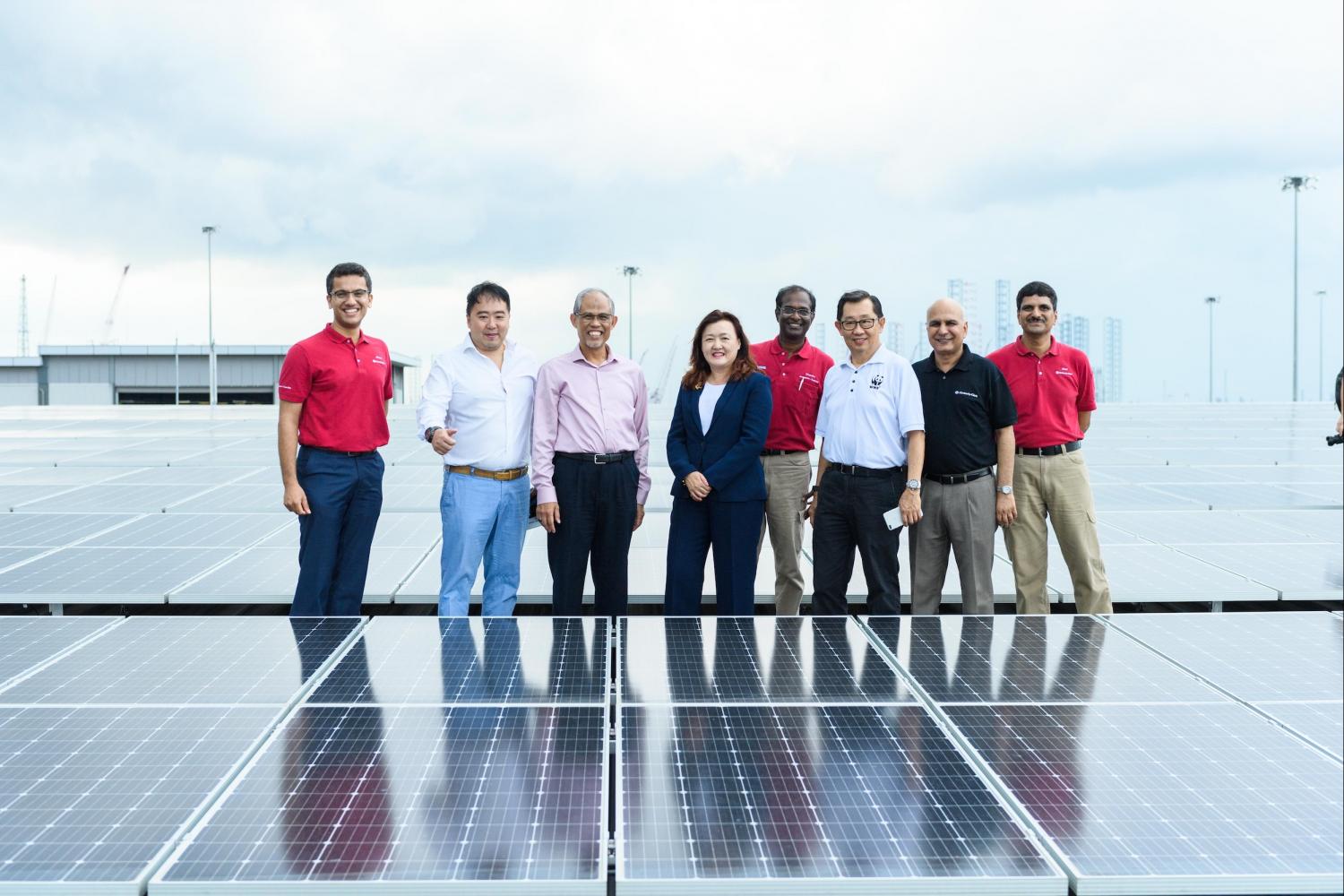
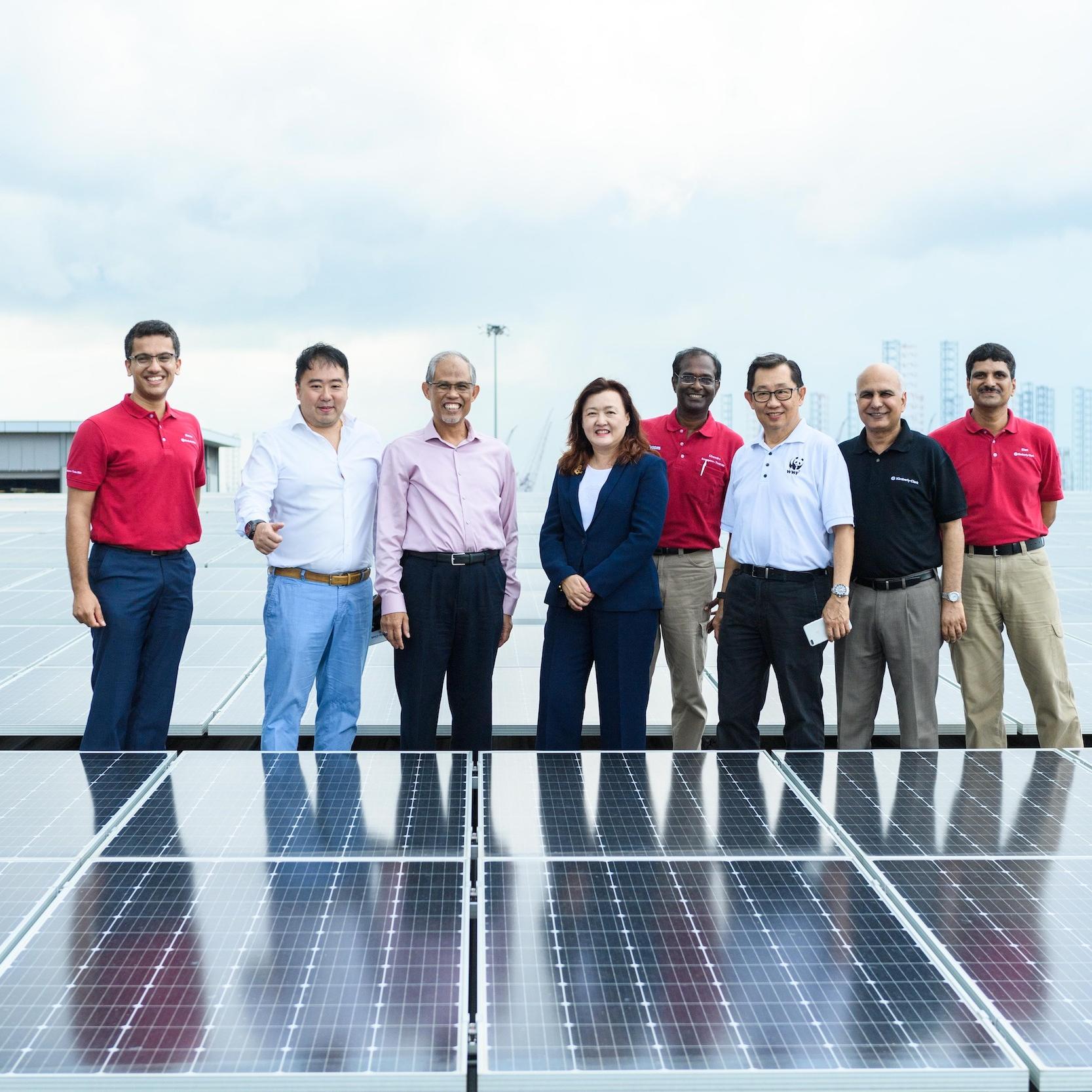
Data indicates that the future of employee engagement centers around purpose. For Kimberly-Clark, that means recognizing “exceptional leadership” in moving toward the company’s sustainability and social impact goals, such as this solar installation at its manufacturing plant in Tuas, Singapore—one of the largest in the country.
Last year, roughly 34 percent of U.S. workers felt engaged and committed to their jobs, according to Gallup polling. While that number sounds pretty dismal, it’s actually the highest level Gallup has ever measured and a six-point improvement over 2008, equating to approximately 8 million more people who are engaged at work. Still, with employee engagement being such a central focus for America’s largest companies, it’s hard to avoid the question: Why are so few workers enthusiastic about their jobs?
Over the past decade, leading companies have assembled almost comical lists of perks as they compete for top talent, but research indicates the next phase in employee engagement won’t have anything to do with gym memberships, ping-pong tables or espresso in the breakroom.
The human resources consulting firm Mercer recently surveyed 7,600 business executives, HR leaders and employees from around the world to find out what helps them thrive at work. The results? Seventy-five percent of those who feel personally and professionally fulfilled say they work for a company with a strong sense of purpose, in which they’re given opportunities to learn and experiment in support of their employer’s broader goals.
As global agendas like the 2015 Paris climate agreement and the U.N. Sustainable Development Goals demand more from business, there’s certainly no shortage of high-level objectives for employees to hang their hats on. Yet the majority of companies are out of sync: Only 13 percent differentiate their employee value propositions with a purpose-driven mission, according to Mercer’s study. And most still measure purpose in things like volunteer hours, product donations and philanthropy— leaving no clear path for employees to contribute to larger impact goals in a meaningful way.
Still, a select few companies are looking to engage employees directly in their sustainability and social impact work—and they’re reaping the benefits in the form of higher employee satisfaction, lower turnover and measurable progress toward their sustainability goals.
For example, Kimberly-Clark recently surpassed its 2022 energy and climate goals four years early—reducing absolute greenhouse gas emissions by 27 percent compared to a 2005 baseline and outperforming its initial goal of a 20 percent cut in GHGs. But this global personal care company couldn’t accomplish such a feat from its headquarters in Irving, Texas. This effort was an all-hands-on-deck operation that enlisted plant managers, pulp and paper mill operators, and teams from more than 60 countries, said Lisa Morden, vice president of safety and sustainability.
“Our business is based on a local empowerment model,” Morden told us. “Global teams like mine support the larger strategies, but … the solutions to meet the goals need to make sense for the local mills. That means having champions for our sustainability programs at the local level is critical.”
Over the past three years, the company behind well-known brands like Huggies, Kleenex and Scott has executed more than 400 energy conservation projects at sites around the world. And a virtual power purchase agreement with two wind farms offset 99 percent of the power needs for its professional manufacturing sites in the U.S.
In response to those early successes, Kimberly-Clark doubled its GHG target to a 40 percent reduction by 2022. “[Surpassing our goal] was only possible because our local mill leaders worked closely with our global and regional teams and set their own energy reduction targets,” Morden told us. “Our Singapore team, for example, installed the largest solar panel roof in the country this year. Actions like that are the reason we could confidently double our goal.”
Kimberly-Clark recognizes teams who contribute to these long-term objectives with its annual Crystal Tree Awards. Along with the manufacturing team in Tuas, Singapore—which replaced 15 percent of its conventional energy use with solar power—this year’s winners include a mill team in Barbosa, Colombia, whose virgin pulp reduction program is set to divert 600 tons of waste from landfills annually. Additionally, the company’s Kotex team in North America created the Alliance for Period Supplies to make sanitary products more accessible to low-income women, while a team in India forged a partnership to collect soft plastic packaging.
To be nominated, every project must show a connection to one of the company’s 2022 goals and to direct business results, highlighting how it either impacted operations or consumer experience, Morden said. Employees from across the company vote on which projects inspired them most.
Generally speaking, this type of movement to break sustainability from its silo and tie it to every employee’s work is the exception, not the norm. But Kimberly-Clark finds itself in good company among other early movers in this area.
IBM, for example, engages all of its business units in environmental goal-setting to help every employee understand its long-term objectives. British retailer Marks & Spencer designates “sustainability champions” at all of its nearly 1,400 stores to ensure each location contributes to companywide targets. And the German consumer goods company Henkel encourages its 53,000 employees to champion sustainability, as over 90 percent of them have received training through its Sustainability Ambassador program since 2012.
For Kimberly-Clark, engaging employees directly in sustainability not only helps the company make progress on its goals, but also creates a more fulfilling work experience for teams around the world.
“While our community giving programs—product donations, scholarships and nonprofit partnerships—are impactful to the communities where we live and work, giving the mill teams ownership to meet our collective goals creates an entirely different type of engagement and career satisfaction,” Morden concluded. “That’s the power of taking your global sustainability goals and making it personal to your people.”
Previously published in the Autumn 2019 edition of CR Magazine.
Image courtesy of Kimberly-Clark
The Top Water Headlines of 2019


2019 has been another big year for environmental news stories, culminating in last week’s disappointing end to the annual U.N. climate negotiations. But what has this year meant for water? Here are the top five trends.
1. Too much or too little
Droughts and floods dominated headlines in 2019. Chennai, a city in India with a population roughly equivalent to New York City, is on the verge of running out of water. Only four years ago, the area faced devastating floods from monsoon rains, and this year saw three of its four reservoirs run dry. This growing city in India’s south looks to be a harbinger for future scarcity in Bangalore, often called India’s Silicon Valley.
Sydney, Australia, is also facing one of its most severe droughts in recent years, and Sydneysiders are looking at severe restrictions on water use, much like last year’s situation in Cape Town. And while Sydney does not have the population density of Chennai, wildfires are also gripping the region, putting it at increasing risk.
On the flip side, some places saw too much water this year. Towns and farms throughout the Midwestern U.S. faced flooding as the Mississippi River overflowed. Some of the flooding highlighted the poor state of some of the infrastructure along the river. Recovery costs are in the billions of dollars, and the impact of the flooded corn and soybean fields is not yet fully clear.
More recently, flooding in Venice has captured the world’s attention. Although the city is used to flooding, this year’s events were something more: the highest water levels in 53 years. In addition to irreversible damage to historic buildings, it could mean the exodus of further residents in the already shrinking city as people flee inland.
2. Water scarcity as a risk
In 2019, more businesses woke up to the fact that water scarcity poses a risk to their operations, from industrial processes to data centers to simply powering facilities. Still, about half of companies do not have a plan to realize their water reduction targets, according to an Ecolab/Greenbiz survey conducted earlier this year. Although that same survey found that 74 percent of respondents said water is a priority, and 59 percent said it is a growing business risk. And while some businesses are reducing water use in their own operations, in some places business leaders pushing for better governance to fit the technological solutions that already exist.
3. Clean water troubles spread
Clean water continued to produce headlines five years after the crisis in Flint, Michigan. High levels of lead were found in the drinking water in Newark, New Jersey, earlier this year. And in May, researchers concluded that 43 states had sites with elevated levels of toxic chemicals coming from their taps.
Further, experts have estimated that Flint and Newark may be the tip of the iceberg as necessary water infrastructure upgrades have not been completed for decades. Unfortunately, initiative on infrastructure has not been trending this year, despite the floods and water quality concerns.
4. Stamping out water inequality
The theme of 2019’s World Water Day was "Leave No One Behind," highlighting the global inequality of access to clean, safe water. Marginalized communities are more likely to have inadequate supplies. Although this is often viewed as a problem for the developing world, the developed world is not immune. While wealthy people, cities and countries will always be able to find the means to buy new supplies, the poor and marginalized will struggle to gain the same access.
Flint is a case in point: A government-appointed committee in Michigan found that race was a factor in causing the crisis. In the U.S. more broadly, this has also become an issue in the aftermath of extreme weather events, like hurricanes and floods, when poorer residents struggle to regain their footing after the relief trucks have left.
5. The climate change connection
The connective tissue that runs through all of this is climate change. Water will be more affected by climate change than any other sector. Whether this means more extreme weather events leading to floods and droughts, climate migrants and the impact of those shifting populations, or increased stress on already fracturing infrastructure, climate change as a pressure on water began to show up in more discussions on the topic overall.
The fact that this conversation is happening is a sign of progress. The more the dots are connected, the better equipped we are to solve the problem. As the saying goes, “The first step is admitting you have a problem.” At first glance, these trends may seem overwhelming and dire, but they are a necessary part of the solution.
Image credits: M Waleed and fotografierende via Pexels
Viral Influencer Campaign Meets Goal to Plant 20 Million Trees

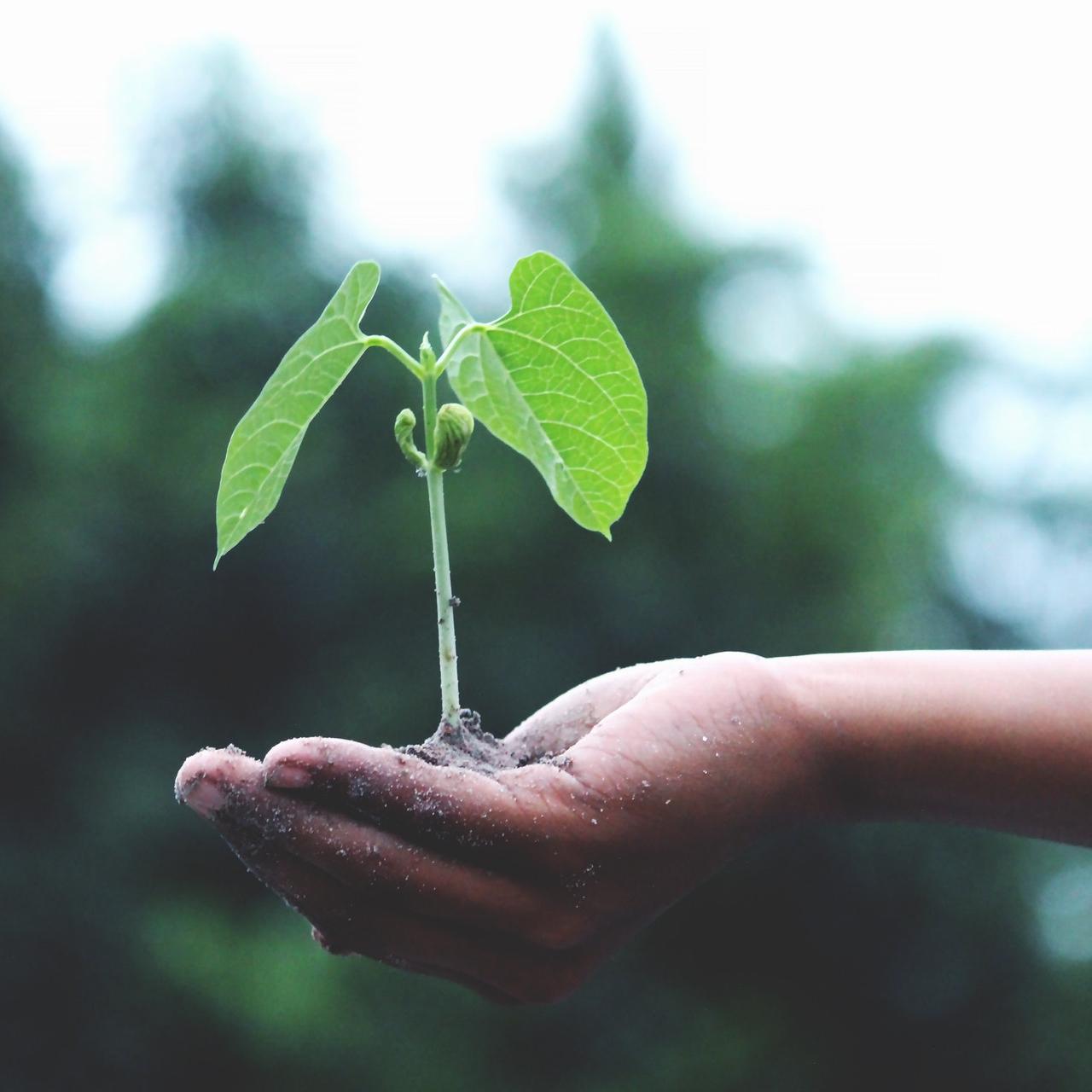
The holidays came early for YouTuber Jimmy "MrBeast" Donaldson and the Arbor Day Foundation as their viral #TeamTrees campaign crossed the finish line of funding 20 million tree-plantings worldwide.
Launched on Oct. 25, the campaign aimed to raise $20 million to plant 20 million trees in celebration of Donaldson's YouTube channel reaching 20 million subscribers. Inspired by a Reddit challenge from a fan, #TeamTrees quickly went viral—raising $12 million by November and attracting attention from high-profile donors like Elon Musk, Twitter co-founder Jack Dorsey and YouTube CEO Susan Wojcicki.
The campaign hit the goal on Friday, over a week before its self-imposed deadline of Jan. 1. "We did it!!" Donaldson announced on Twitter. "Thank you so much to the over 500,000 different people that donated and the hundreds of influential people that promoted the campaign! Teamtrees was more than planting 20 million trees, it was a movement that shows we care and we want to make change."
The campaign is the largest crowdfunding effort in YouTube's history and "one of the fastest-growing environmental fundraising initiatives to-date," according to the Arbor Day Foundation. Through its global network, the Foundation will plant the promised 20 million trees across every continent except Antarctica, from January 2020 through December 2022. Tree species will be native to each area, ensuring survivability and maximum benefit for local ecosystems.
"We are proud to have partnered with #TeamTrees and are humbled at the outpouring of support," Dan Lambe, president of the Arbor Day Foundation, said in a statement on Friday. "We recognize the trust that's been placed in us. Now it is time to begin carefully planting these 20 million trees all over the world."
Influencers taking stands
As TriplePundit follows the brands taking stands movement and the rising trend of corporate, executive and employee activism, the prominent role of online influencers has come into sharper focus.
A powerful economic and cultural force in their own right, the social media influencer market is expected to be worth up to $15 billion by 2022, and U.S. teens say they look up to influencers more than traditional celebrities like actors, musicians and athletes.
In the case of #TeamTrees, hundreds of these high-profile voices leveraged their clout for good. YouTube videos related to the campaign earned a staggering 276 million views, with help from Donaldson and former NASA engineer Mark Rober, who himself has over 10 million subscribers on the platform. A single YouTube live stream by user Jacksepticeye raised $154,000 from 9,000 donors in a matter of hours, according to #TeamTrees.
As news of the campaign spread across the Web, it turned into scores of memes on Reddit, live-stream benefits on Twitch, half a billion views on TikTok and fundraiser bake sales IRL (that's "in real life" for the grups in the room).
"When Mark [Rober] and I started this campaign, we couldn't have predicted the incredible support #TeamTrees would receive," Donaldson said in a statement. "From hundreds of YouTube creators, to the biggest names in Silicon Valley, to kids holding bake sales, a huge team came together to make this possible. This is a big win for the planet."
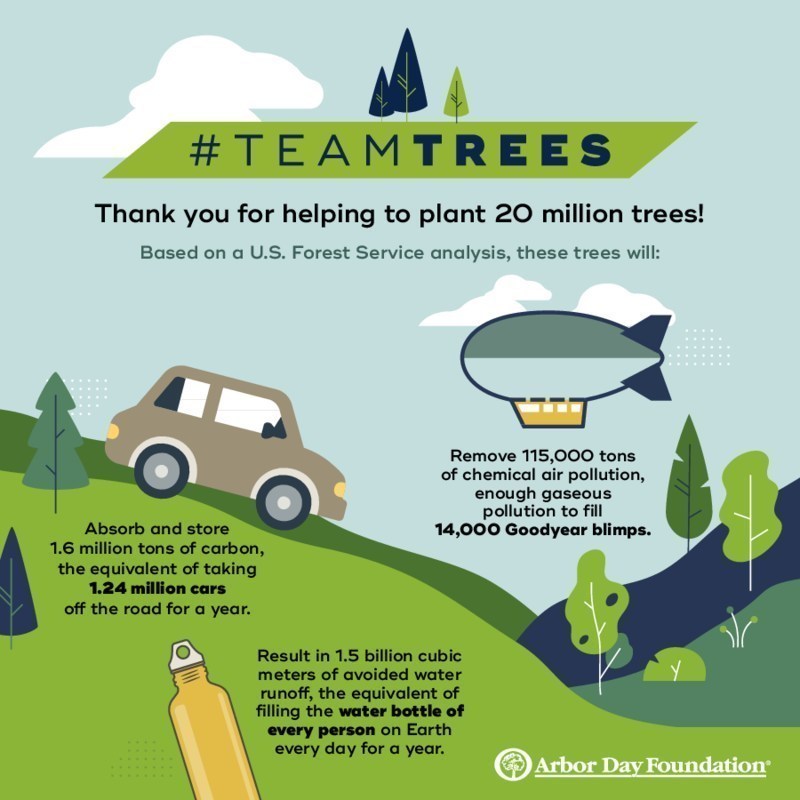
(Image: The impact of planting 20 million trees, according to the Arbor Day Foundation.)
#TeamTrees succeeds where COP25 failed
The success of #TeamTrees is timely for a number of reasons. Nature-based climate solutions emerged as a key point of focus at the annual U.N. climate talks (COP25)—and for good reason.
Nature-based solutions could could deliver 37 percent of the emissions reductions scientists say is needed to limit global temperature rise, according to the World Business Council for Sustainable Development (WBSCD). And, per the National Academy of Sciences, forest restoration has the most global climate mitigation potential compared to all other natural solutions.
Though COP25 ended in disappointment, with world leaders again unable to agree on key issues, campaigns like #TeamTrees illustrate how much influence everyday people have, organizers say.
"#TeamTrees is a prime example of youth leadership—especially the Gen Z 'Change Generation'—moving beyond retweet activism and harnessing the power of social media to address key societal issues," said Lambe of the Arbor Day Foundation. "The 20 million trees planted through this campaign will absorb and store 1.6 million tons of carbon, the equivalent of taking 1.24 million cars off the road for a year."
The campaign will continue to collect donations beyond the Jan. 1 deadline, with proceeds going toward the Foundation's Time for Trees initiative, a commitment to planting 100 million trees by 2022.
"We know 20 million trees won't cure climate change but this is a clear message that we care about our planet and about each other," said Matt Fitzgerald, campaign director for #TeamTrees, in a statement. "Solutions are all around us and it's time to get to work. #TeamTrees is here for it. This is just the beginning."
Image credits: Akil Mazumder/Pexels and the Arbor Day Foundation
2019 Was a Big Year For Sustainable Seafood


2019 was a big year for sustainable development in seafood. From the Venetian Hotel partnering with FishWatch to Tyson Foods investing in a plant-based shrimp startup, brands took initial steps to foster sustainable seafood supply chains. Such moves are essential since 55 percent of our world’s oceans are overfished and may house more plastic than fish by 2050.
Both large and small players in seafood and seafood replacements saw sustainable development as an important part of their 2019 business strategy. Read on for just three examples.
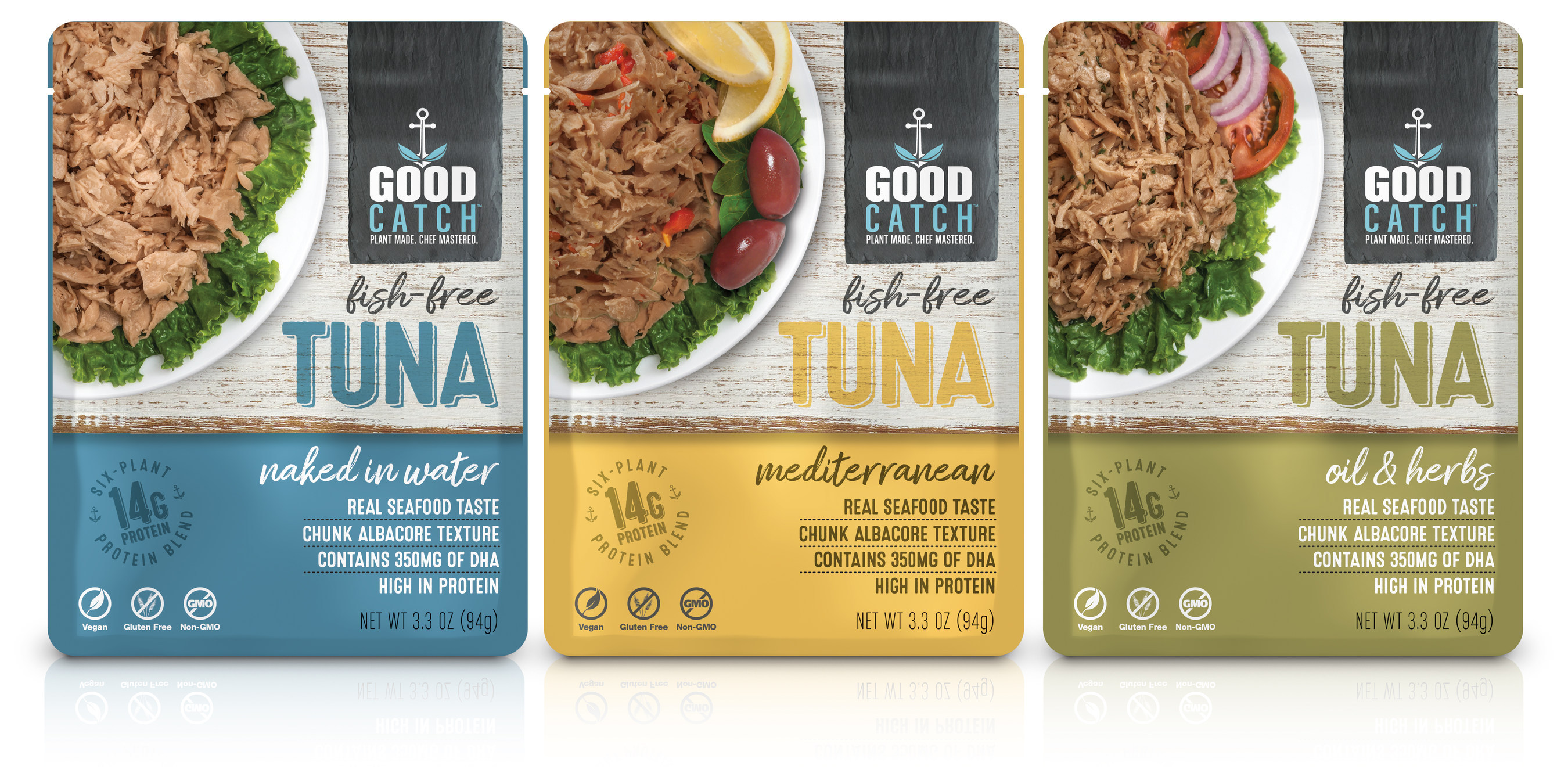
1. Plant-based fish products recognized for their flavors
This year, plant-based seafood achieved the seemingly impossible: the “just right” texture and flavor. The fish-free tuna by Good Catch Foods, which TriplePundit touted as a vegan seafood company to watch in 2019, won a Nexty Award as the best new meat alternative at Expo East 2019, the largest natural food products expo in the United States.
Similarly, Ocean Hugger Foods, a plant-based tuna and eel company, launched several products in retailers and restaurants across the U.S. this year—including Whole Foods Market, Albertsons and Walmart. Albertsons, a U.S. food and drug retailer, eliminated freshwater eel from its sushi products this year due to the eel’s decline and the pollution and disease associated with freshwater eel farms. Not to mention that in the past 10 years, the price of freshwater eel has gone up by 8,000 percent.
2. Partnerships bring increased transparency
Trade associations and retailers upped their data collection through partnerships in 2019, bringing more transparency to seafood supply chains. In March, the National Fisheries Institute, the largest U.S. seafood trade group, partnered with the IBM Food Trust to launch a blockchain-based traceability program for their members that range from suppliers to retailers. The goal is to use blockchain to help companies in the trade group cut down on waste, prevent fraud, and tell a more robust sustainability story.
In October, Walmart leveraged its partnership with IBM to launch a shrimp tracking program, while the Texas grocery chain H-E-B partnered with the Environmental Defense Fund to update its sustainable seafood standards. The move expanded traceability in the grocer's supply chains and adds the fish catch method to consumer-facing marketing.

(Image: BlueNalu's cell-based yellowtail prepared in a poke bowl.)
3. Momentum builds in cellular-based seafood options
Cellular aquaculture companies—companies that produce fish from cell cultures—grew operations and industry partnerships in 2019, proving they are ready to scale.
Five cellular protein companies launched a trade group—the Alliance for Meat, Poultry and Seafood Innovation—in August to seek regulatory approval for their products and educate consumers about the sustainability benefits of cell-based meats. The creation of the trade group is important since communications around their offerings are becoming fragmented as more cellular protein companies enter the market, Quartz reported.
Two companies in particular achieved growth milestones in 2019. Shiok Meats, another cellular fish and meat company, sampled its lab-grown shrimp at the Disruption in Food Summit in Singapore and raised over $4 million in seed funding from various global investors. BlueNalu, a cellular-based seafood company and member of the Alliance, expanded its operations and even demoed its yellowtail amberjack in December.
Looking ahead: Sustainable seafood in 2020 and beyond
As we move into 2020, more retailers and restaurants are likely to bring more transparency to their sustainable seafood sourcing practices and offer new seafood alternatives, outlets like Food & Wine and Today predict.
“Diners who care about the environment and animal welfare will continue to ask food makers about the sustainability of ingredients,” Jenny Zegler, associate director of food and drink for market research firm Mintel, told USA Today. “For their part, companies will increase awareness of their efforts through consumer messaging, social media campaigns and package design.”
Image credits: Caroline Attwood and Filippo Faruffini via Unsplash, Valeria Boltneva/Pexels, Good Catch Foods, BlueNalu
10 Corporate Sustainability Commitments That Flew Under the Radar This Month

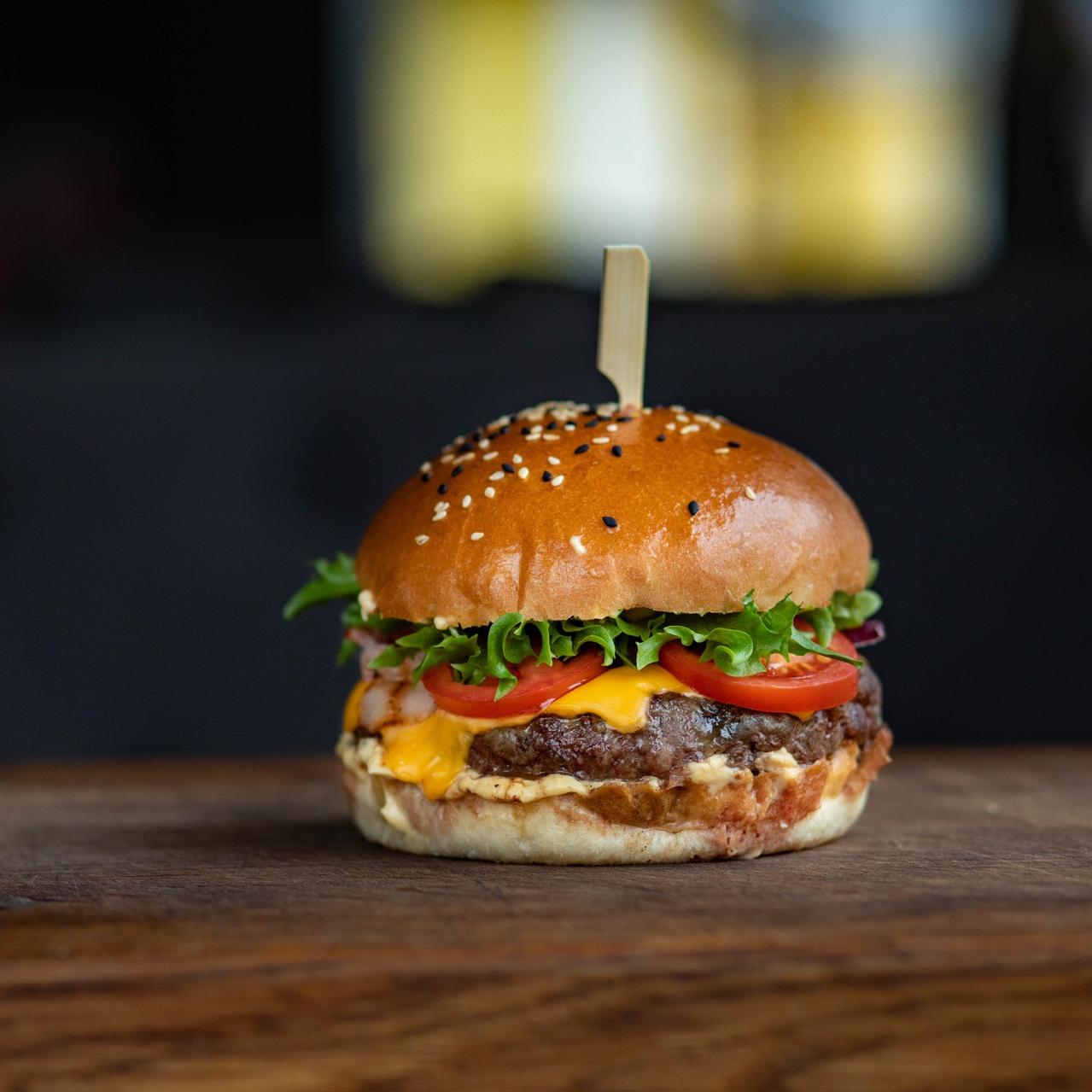
From carbon-positive burgers to bioplastic toys, here are the top sustainability headlines you may have missed this month.
December has been a busy month for new sustainability commitments, product announcements and milestones. Over the past two weeks, we've seen dozens of businesses leverage the annual U.N. climate talks (COP25) to re-up their commitments to reduce emissions and increase efficiency.
By itself, the U.N. Global Compact’s Business Ambition for 1.5°C campaign has doubled in size between Climate Week in September and the end of the U.N. talks. As of last week, 177 companies with a collective $2.8 trillion in market capitalization have aligned with the global push to cap temperature rise at 1.5 degrees Celsius through the campaign.
Having trouble keeping up? You're not alone. Here are just a few of the headlines that crossed our desks over the past two weeks.
Ikea, H&M and Swedish burger chain MAX Burgers create 'climate positive' business framework
MAX Burgers, the only national burger chain in Sweden with over 150 restaurants, has been climate positive since last year, as recognized by the U.N. But what does this mean, really?
The company linked up with Ikea, H&M and the World Wildlife Fund (WWF) to put the definition on paper. And last week, this cohort released the first draft of a global framework for a climate positive corporation. Among other defining characteristics, becoming a climate positive company means "reaching net-negative emissions by 2040 at the latest," according to the framework.
For its part, Ikea is putting its money where its mouth is and plans to invest $220 million toward its climate-positive ambitions.
Ecolab leverages net-zero commitment to push water into the climate conversation
Water, energy and hygiene solutions firm Ecolab is among the latest to commit to a net-zero trajectory—pledging to halve emissions by 2030 and zero them out by mid-century.
The company leveraged its COP25 announcement to advocate for water issues as part of mainstream climate dialogue. “You can’t tackle climate effectively if you don’t tackle water at the same time," said Emilio Tenuta, VP of corporate sustainability for Ecolab. Read more on 3p here.
Patagonia creates used gear rental program with Awayco
Outdoor gear label and sustainability darling Patagonia is no stranger to selling used gear. Now, it's going to the next level in partnership with outdoor rental platform Awayco.
Starting at the brand's new flagship store in Denver, customers will have the option to reserve used gear on Awayco and pick it up in store before heading to one of a half dozen major mountain destinations nearby. Getting into gear rental makes sense for Patagonia, a perennial advocate for more responsible consumption.
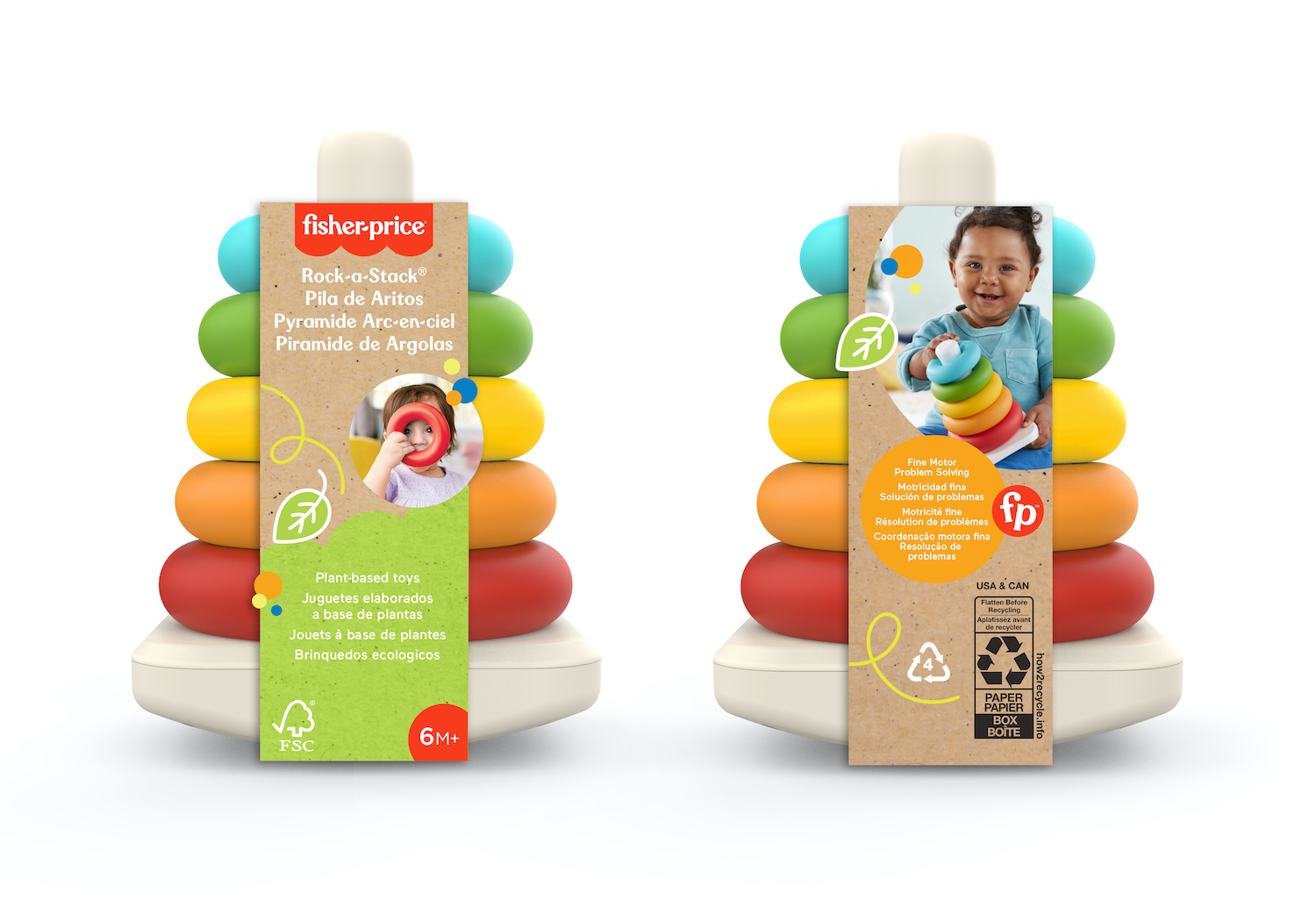
Mattel to switch to sustainable plastic by 2030
This week, storied toymaker Mattel pledged to use 100 percent recycled, recyclable or bio-based plastics in products and packaging by 2030. Its first product will be a revamped version of the Fisher Price Rock-a-Stack, a classic best-seller that dates back to the 1960s.
Made from sugarcane-based plastics and packaged in "100 percent recycled or sustainably sourced material," the new Rock-a-Stack will hit store shelves in early 2020, Mattel says.
Delta signs on to purchase 10 million gallons of sustainable fuel annually
This week, Delta Air Lines announced a long-term agreement with biofuel company Gevo to purchase 10 million gallons of sustainable aviation fuels annually. The fuel will be produced after an expansion of Gevo's Minnesota production facility and is expected to be available between 2022 and 2023.
“Fuel is an airline’s biggest area of impact and therefore presents our greatest opportunity to drive solutions that care for the planet,” Graeme Burnett, senior vice president of fuel management at Delta, said in a press statement. The move comes after Delta invested $2 million to study the feasibility of a new biofuel facility in Washington state, in partnership with another producer.
Bank of America meets $125 billion environmental business commitment six years ahead of schedule
Back in 2013, Bank of America pledged to deploy $125 billion for low-carbon business activities—and this month, it met that goal six years early. The cash funded energy efficiency, renewable energy and sustainable transportation projects across the U.S., supporting "tens of thousands of jobs" in the process, according to Bank of America.
This milestone brings the financial giant’s total commitment to more than $445 billion since 2007, per company estimates. That includes $6.35 billion in issued corporate green bonds, the newest of which was announced in October and valued at $2 billion. The bank also underwrote nearly $50 billion in green bonds on behalf of corporate clients.
“Through our sustainable finance efforts, we’re driving a clean energy future, while helping our clients accelerate their business activities related to low-carbon and sustainable growth,” Anne Finucane, vice chairman at Bank of America, said in a press statement. Up next: The company plans to mobilize an additional $300 billion in sustainable financing by 2030, with a focus on projects that support the U.N. Sustainable Development Goals (SDGs).

Blue Bottle cafes to go zero-waste next year
Iconic Bay Area coffee label Blue Bottle, which was acquired by Nestle in 2017, plans to phase out single-use cups and bags at all of its U.S. cafes by the end of 2020. The company previously switched to biodegradable cups but felt the move didn't go far enough, CEO Bryan Meehan wrote in a letter earlier this month.
"At Blue Bottle, we’re not afraid to admit that we’re part of the problem," Meehan wrote. "We recently woke up to the fact that our beautiful bioplastic cups and straws were not being composted even though they were 100 percent compostable. Too many ended up in landfills, where they couldn’t break down at all."
After a brief stint using paper straws and sugarcane-paper cups, the company opted for an entirely zero-waste model, starting with a pilot in San Francisco. Read Meehan's full letter here.
Pete and Gerry's ups the sustainability ante with the industry's first reusable egg carton
Made up of 45 family-run organic farms from New England to the Midwest, Pete & Gerry's is no stranger to sustainability. It's the largest U.S. producer of free-range, organic, Certified Humane eggs and offers take-backs for its packaging. So, it comes as no surprise that the brand is the first in its industry to test reusable egg cartons.
"We recognize that reuse is even better than recycling," CEO Jesse Laflamme said in a statement, "and we're proud to be at the forefront of this growing movement to help reduce the impact of packaging on the planet.” Read more on 3p here.
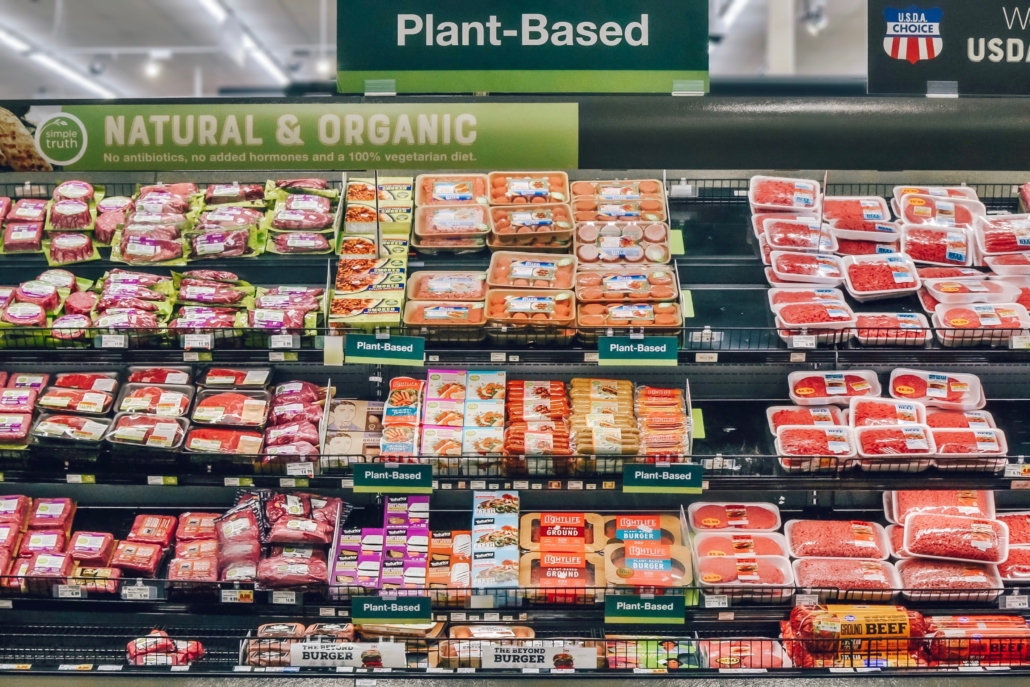
Kroger puts plant-based meat on the big stage
Over the next 16 weeks, shoppers will find plant-based meat displays featured prominently in the conventional meat department at 60 Kroger stores across Denver, Indiana, and Illinois.
The move is part of a consumer engagement test in partnership with the Plant-Based Foods Association (PBFA), which will track how moving plant-based meats out of specialty sections affects sales.
"Our goal is to provide retailers with actionable data to inform merchandising decisions and optimize plant-based food sales," Julie Emmett, senior director of retail partnerships for PBFA, wrote on the Association's website. The test was first announced in September and went live this week.
Hilton expands food waste reduction initiative to more than 300 hotels
Following a pilot at 50 hotels, Hilton will expand its food waste reduction program to all North American properties, the company announced this week. Along with getting smarter about food prep and service to reduce waste-up front, pilot hotels connected with local food rescue nonprofits to re-route leftovers to those in need. Scraps that can't be donated are composted, saving approximately $7,000 per month in waste hauling fees, the company says.
The expansion creates one of the largest hotel food donation programs to date. Pilot hotels have already diverted more than 6 million pounds of food waste from landfills, an equivalent of more than 11,000 megatons of carbon emissions, according to Hilton. Read more on 3p here.
Image credits: Valeria Boltneva/Pexels; Fisher Price; Tyler Nix/Unsplash; Plant-Based Foods Asociation